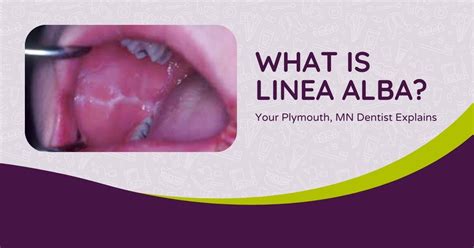Front Tooth Implant: Permanent Smile Solution
Losing a front tooth can be a devastating experience, affecting not only your self-confidence but also your ability to speak and eat properly. The good news is that a front tooth implant offers a permanent and highly effective solution to restore your smile and overall oral function. In this comprehensive guide, we’ll delve into the world of front tooth implants, exploring their benefits, procedures, and what you can expect from this life-changing dental restoration.
Understanding the Importance of Front Teeth
Front teeth, also known as incisors, play a crucial role in our daily lives. They are responsible for biting and cutting food, contributing to speech clarity, and, importantly, influencing the aesthetics of our smile. Losing one can significantly impact our self-esteem and quality of life. Traditional solutions like dentures or bridges can offer temporary fixes, but they often lack the natural feel and permanence of an implant.
What is a Front Tooth Implant?
A front tooth implant is a dental restoration that involves surgically placing a titanium post into the jawbone to serve as the root of the missing tooth. This post is then topped with a crown, carefully designed to match the color, shape, and size of your surrounding teeth. The process is designed to mimic the natural tooth as closely as possible, providing both functional and aesthetic benefits.
Benefits of Front Tooth Implants
Natural Appearance and Feel: Implants are designed to look and feel like your own teeth. They are professionally matched to your existing teeth, ensuring a natural appearance that boosts your confidence.
Durability: With proper care, dental implants can last for decades, making them a long-term solution for tooth loss.
Improved Speech and Eating: By filling the gap left by a missing tooth, implants can significantly improve your ability to speak clearly and chew food efficiently.
Preservation of Jawbone: The titanium post stimulates the jawbone, preventing it from deteriorating. This is particularly important for maintaining facial structure and preventing the sunken look associated with missing teeth.
Low Maintenance: Implants are easy to care for; simply brush and floss them as you would your natural teeth.
The Procedure: From Consultation to Crown Placement
The journey to a front tooth implant involves several steps, starting with an initial consultation with a dental specialist. This is followed by a thorough examination, which may include X-rays and 3D scans to assess the condition of your jawbone and surrounding teeth. If you’re deemed a suitable candidate, the process will proceed as follows:
Implant Placement: The dentist will surgically place the titanium post into your jawbone. This is typically done under local anesthesia and may require a few months for the bone to heal and fuse with the implant.
Abutment Attachment: Once the implant has integrated with the bone, an abutment is attached. This small connector post will hold your new crown in place.
Crown Placement: The final step involves fitting the implant with a custom-made crown. Your dentist will ensure the crown matches your surrounding teeth perfectly and functions naturally.
Recovery and Aftercare
While the dental implant procedure is generally safe and successful, there are some considerations for recovery and aftercare:
Immediate Aftercare: Follow your dentist’s instructions for the first few days post-surgery, which may include a soft-food diet, gentle oral hygiene near the implant site, and avoiding strenuous activities.
Long-Term Care: Regular dental check-ups are crucial to ensure the health of your implant and surrounding teeth. Maintain good oral hygiene practices and consider avoiding habits that could damage your teeth, such as chewing ice or using your teeth as tools.
Overcoming Concerns: Cost, Pain, and Success Rate
Common concerns about front tooth implants include their cost, the potential pain during and after the procedure, and the success rate of the treatment.
Cost: While implants can be more expensive upfront than traditional dentures or bridges, their durability and low maintenance make them a cost-effective solution in the long run.
Pain: The procedure is typically performed under local anesthesia, minimizing discomfort during the surgery. Some patients may experience mild discomfort during the recovery period, which can be managed with pain relievers.
Success Rate: Dental implants boast a high success rate, often cited above 95%. However, success can depend on various factors, including the patient’s overall health, the quality of the implant and crown, and post-procedure care.
Enhancing Your Smile: Beyond the Basics
For those looking to not only restore a missing front tooth but also to enhance their overall smile, there are several complementary treatments to consider:
Teeth Whitening: A professional teeth whitening procedure can ensure your new implant crown blends seamlessly with the rest of your smile by brightening the surrounding teeth.
Orthodontic Treatments: If you’re concerned about the alignment of your teeth, orthodontic treatments like braces or clear aligners can be used in conjunction with implant placement to achieve a perfectly aligned and aesthetically pleasing smile.
Gum Contouring: For some patients, the appearance of their gums can significantly impact the aesthetic outcome of their smile. Gum contouring can help reshape the gum line to better frame your teeth and implant crown.
Conclusion
A front tooth implant is more than just a dental restoration; it’s a key to unlocking your confidence and improving your quality of life. With its natural feel, durability, and ability to restore both function and aesthetics, it’s no wonder that dental implants have become the go-to solution for those dealing with tooth loss. By understanding the benefits, procedure, and aftercare of front tooth implants, you’re one step closer to regaining your smile and embracing a brighter, healthier you.
Frequently Asked Questions
How long does the entire process of getting a front tooth implant take?
+The process, from initial consultation to the final placement of the crown, can take several months. This duration allows for the necessary healing time for the implant to integrate with the jawbone, typically ranging between 3 to 6 months.
Are front tooth implants suitable for everyone?
+While dental implants are a highly effective solution for many, suitability depends on individual factors such as overall health, the condition of the jawbone, and lifestyle habits. A consultation with a dental specialist is necessary to determine candidacy.
How do I care for my front tooth implant to ensure its longevity?
+Caring for your implant involves practicing good oral hygiene, including brushing and flossing regularly. Regular dental check-ups are also crucial to monitor the health of the implant and surrounding teeth.


